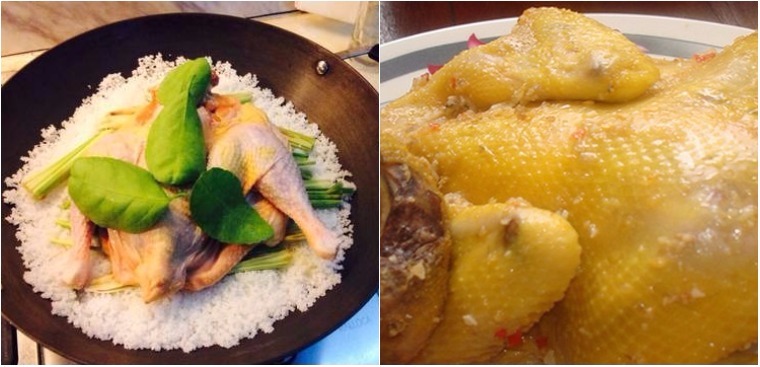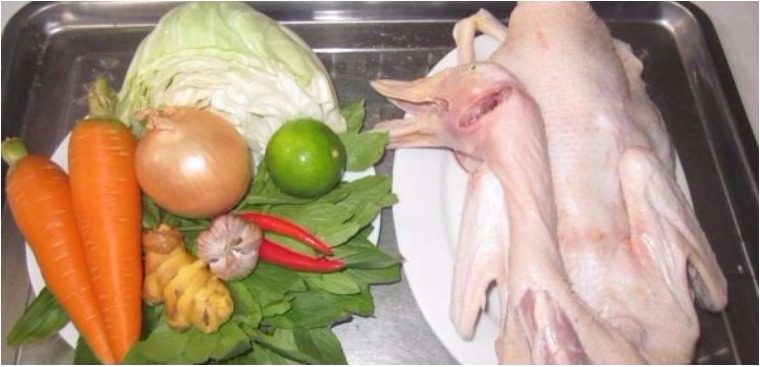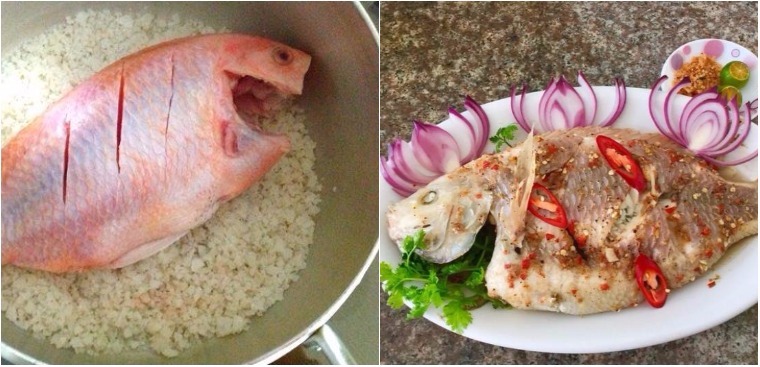Steamed Chicken
Although it’s called steaming, we actually use salt to cook the chicken, helping it to cook through without absorbing too much of the salt’s flavor. This method ensures the chicken meat is firm and not as soft as boiled or water-steamed chicken.
You will need to heat the salt first, which helps to dry it out and prevent the chicken from becoming too salty. Place some lemongrass stalks on the heated salt and then place the chicken on top to avoid any saltiness seeping into the meat during steaming.
Then, steam the chicken for 30-60 minutes. It’s important not to lift the lid during this process, as escaping heat will significantly increase the cooking time.

Additionally, you can add lemon leaves and lemongrass to enhance the flavor of the chicken. A similar method can be used for duck, but it’s recommended to include grilled ginger and garlic on top of the salt to eliminate the duck’s unpleasant odor.

Steamed Fish
Similarly, fish can also be cooked using the heat and saltiness of salt. Salt is a key ingredient in enhancing the flavor of the fish meat.
Use a dry, hot pan to heat the salt, then place the fish on top. Cover and steam for 10 minutes. Then, uncover and steam for another 10 minutes to ensure the fish is fully cooked.
The process of uncovering the pan helps reduce the internal temperature, preventing the fish from drying out or burning.
If you’re concerned about the fish becoming too salty, place some ginger slices on the salt before placing the fish on top to act as a barrier between the salt and the fish.
You can also add a sauce to the fish when you uncover the pan to enhance the flavor and prevent dryness due to escaping liquids.

Fried Eggs
Instead of steaming, we’ll fry the eggs. Similar to the above methods, heat a pan of salt and then add the eggs. Cover and fry for 5 minutes, then uncover, stir, and fry for another 5 minutes.
You can add some scallions and chili peppers for extra flavor. The eggs will have a salty taste from the salt, a mild spiciness from the chili, and a pleasant aroma from the scallions, making them a delicious accompaniment to hot rice.

Note: For all these methods, you can use table salt or crystal salt. However, crystal salt is preferable as it reaches higher temperatures and provides a drier, more intense flavor.






























